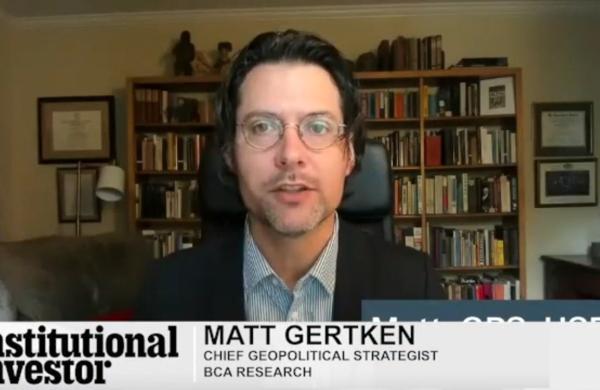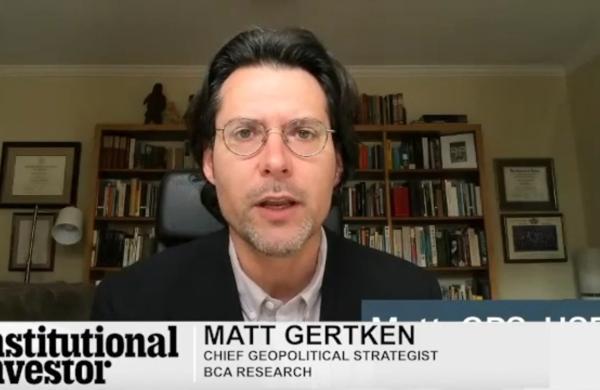With U.S. stock indexes near record highs and a day-trading boom in full swing, many investors likely fancy themselves as brilliant. However, history suggests that even during ordinary times picking winning stocks on a consistent basis is incredibly challenging.
Since 1926, most stocks have underperformed Treasurys and just 86 stocks have accounted for half the market’s total wealth creation, according to research by Hendrik Bessembinder, professor and Francis J. and Mary B. Labriola Endowed Chair in Competitive Business at Arizona State University’s W. P. Carey School of Business.
In an interview conducted via email, RIA Intel recently caught up with Professor Bessembinder to learn more about his eye-opening research, which reveals that the “no pain, no gain” mantra applies to the best-performing stocks over the long term.
You published a report in 2018 that made quite a splash. You said that since 1926 four out of seven common stocks had lifetime buy-and-hold returns less than one-month Treasuries. You also noted that the best-performing four percent of listed companies accounted for all of the U.S. stock market’s gains in that time. This would appear to be an indirect endorsement for an S&P 500 index fund. Is that a takeaway from this? Or is there something else you would emphasize?
I actually think that my 2018 paper provides some evidence for each side of the great active vs. passive debate. There was already a strong argument for low-cost index funds, and then my paper added to that argument the insight that the majority of undiversified portfolios will end up underperforming the index benchmark. That said, I think that one of the most important ideas in all of economics is comparative advantage. There are some investors (perhaps only a few) with the right skills to comprise a comparative advantage in identifying misvalued securities, and in particular in identifying stocks with potential to go on to be big winners. I like to draw an analogy to professional athletics.
While there are a few with the right comparative advantage to earn their living from their athletic skills, most of us should keep our day jobs. More broadly, the economy needs some active investors to keep the markets reasonably efficient -- we can’t all be indexers. So, for those investors without a comparative advantage in identifying misvalued securities, or the ability to identify managers with those skills, the evidence in my paper strengthens the argument for low-cost index funds. For those investors with the right comparative advantage, the evidence in my paper gives indications of what is possible.
Can you define to the extent possible what constitutes a comparative advantage? Are there specific traits shared by those possessing them, be it that they tend to aggressively buy “when there is blood is in the street” or make concentrated bets or buy and hold for many years, etc.? Or does it simply come down to recognizing sustained investing greatness over many years, à la Soros, Buffett, Simons?
I am not sure I can give a very specific response. The ability to avoid emotional decision making (and to resist pressure from emotional investors) to instead remain focused on the fundamentals is part of it. Good quantitative and data processing skills can contribute. But I think that there is a substantial intuitive component, including the ability to assess which companies have a product/service lineup that can fill previously unsatisfied demand and the ability to evaluate whether a company’s management team has what it takes to deliver on a company’s potential.
Tell me more about your research and how the strength of a few enduring winners more than offset the underperformance of most others and those that went under. And what does this say about the continued confidence of many who think they can beat the market?
It is human nature to be overconfident. While economic reasoning convinces me that some investors and investment managers have the right skills to outperform, the big practical issue for the rest of us is assessing who actually has those skills vs. those who only claim to have them. The fact that stock returns are so volatile makes it hard to know the difference – a given manager can outperform because they are skilled or because they are lucky. Hopefully at this point we can debunk the notion that it is easy to beat the market or that any investment manager can do so. There will be a few that can do so. Identifying them is a challenge, but I think that some (e.g. pension fund managers) should continue to consider taking up the challenge. To do so, they need to be open minded, while maintaining healthy skepticism.
When does one rule out luck as a plausible explanation for outperformance? Does it require say, five or ten years of outperformance for it to be clear that the investor is talented? Granted, in addition to duration, the magnitude of outperformance matters, too.
As your question anticipates, there is no simple answer. The longer the track record of outperformance the stronger is the evidence. And delivering outperformance on a large position is more informative than the same percentage performance on a small position. I also think there is a subjective element in assessing investment managers, somewhat analogous to the subjective element in how investment managers assess corporate managers. That is, there is room for a pension fund or endowment manager to take into account the thoughtfulness and plausibility of an investment manager’s strategies.
Your new report states: “Just eighty-three firms (0.32% of total) accounted for half, and five firms (0.02% of the total) accounted for 11.9%, of net shareholder wealth improvement during this 94-year period.” Does this argue in favor of market cap-based indexes (regardless of valuation) compared to equal-weighted indexes/portfolios, even if the latter possess far more attractive valuations? Feel free to discuss any relevant points related to the fact that few winners account for so much of the market's long-term gains.
A central point of my papers is that we should not be surprised that a few stocks explain most of the market’s gains – we should expect this to be the norm not the exception. By extension, it is normal that the outcome to a value-weighted index is not very informative about how a typical stock in the index performed. An equal-weighted index would be more informative if that is the goal, and I see no reason not to create and disseminate equal weighted indices – more information is better than less. That said, I see two arguments in favor of value-weighted indices. First, they represent aggregate outcomes better – there really is more capital invested in the large market capitalization companies, so they are more important to the overall investor experience. Second, while an equal weighted index sounds very simple, in practice one needs to trade actively (selling winners and buying losers to get back to equal weights) to match the performance of an equal-weighted index.
Given that few stocks have historically accounted for the great majority of the market’s gain, what should an investor do today given years of extreme outperformance by growth over value and the current apparent disparity in valuation, with growth appearing expensive relative to value? While recognizing that each investor’s needs are different, how would you recommend your average investor allocate the equity portion of their portfolio in terms of growth/active and U.S./international?
I generally avoid giving investment advice – there is not too much evidence that I have the right comparative advantage. I can say that I see a lot of merit in remaining internationally diversified.
In your new report you wrote that “even within the highly successful decade, shareholders experienced drawdowns that lasted an average of 10 months and involved an average loss of 32.5%.” More remarkably, you wrote: “During the immediately preceding decade, drawdowns for these highly successful stocks lasted an average of 22 months and involved an average cumulative loss of 51.6%.” This suggests that even for the most successful stocks, great pain continues to be part of the package. Given these numbers, are there any stocks that are trading in a way that suggests they could be the next great wealth generators? Or is it impossible to extrapolate anything from mere price performance?
I guess no one will be too surprised that even the big winners deliver something of a bumpy ride – what surprised me was the extent. Apple has delivered drawdowns over 70% three separate times! Even if one today purchased a stock that will turn out to be the big winner over the next decade or two, most likely there would be periods where the value drops 50% or more. And, as the fourth report in the series shows, it is very hard to identify tomorrow's winners based on characteristics that are objectively observable today.
In terms of their capacity to endure pain, how common is it find investors who have the fortitude to sit tight and endure brutal periods of extended underperformance?
I don’t have a data-based answer, but my guess is that many investors would be tempted to bail out during a 50% or 70% drawdown. So, one place where I hope the new report can contribute value is in showing that such big drawdowns are the norm, even for stocks that turn out to be great investments. That knowledge may help an investor ride it out.
I also imagine that data would suggest that far more buying of successful stocks is done when they are doing well than when they are struggling. Can you discuss that?
Well, we know that every trade has a buyer and a seller. I expect it is true that some investors make the mistake of bailing out of stocks during extended drawdowns and then come back in after they rally. But some other astute investor is on the other side of those trades. The problem becomes somewhat richer when we consider that the firm itself can be on the other side of some trades, in particular when it issues new equity or repurchases shares. If the firm repurchases when the stock tends to be undervalued or issues shares when they are overvalued then investors’ aggregate return experience (sometimes referred to as “dollar weighted returns”) is worse than would be implied by looking at “buy-and-hold” returns. My co-authors and I shed a bit of light on that question in this paper.
Full Disclosure: Bessembinder provides consulting services and has received financial support from Baillie Gifford for his most recent (post-2018) research on the properties of individual stock returns.






